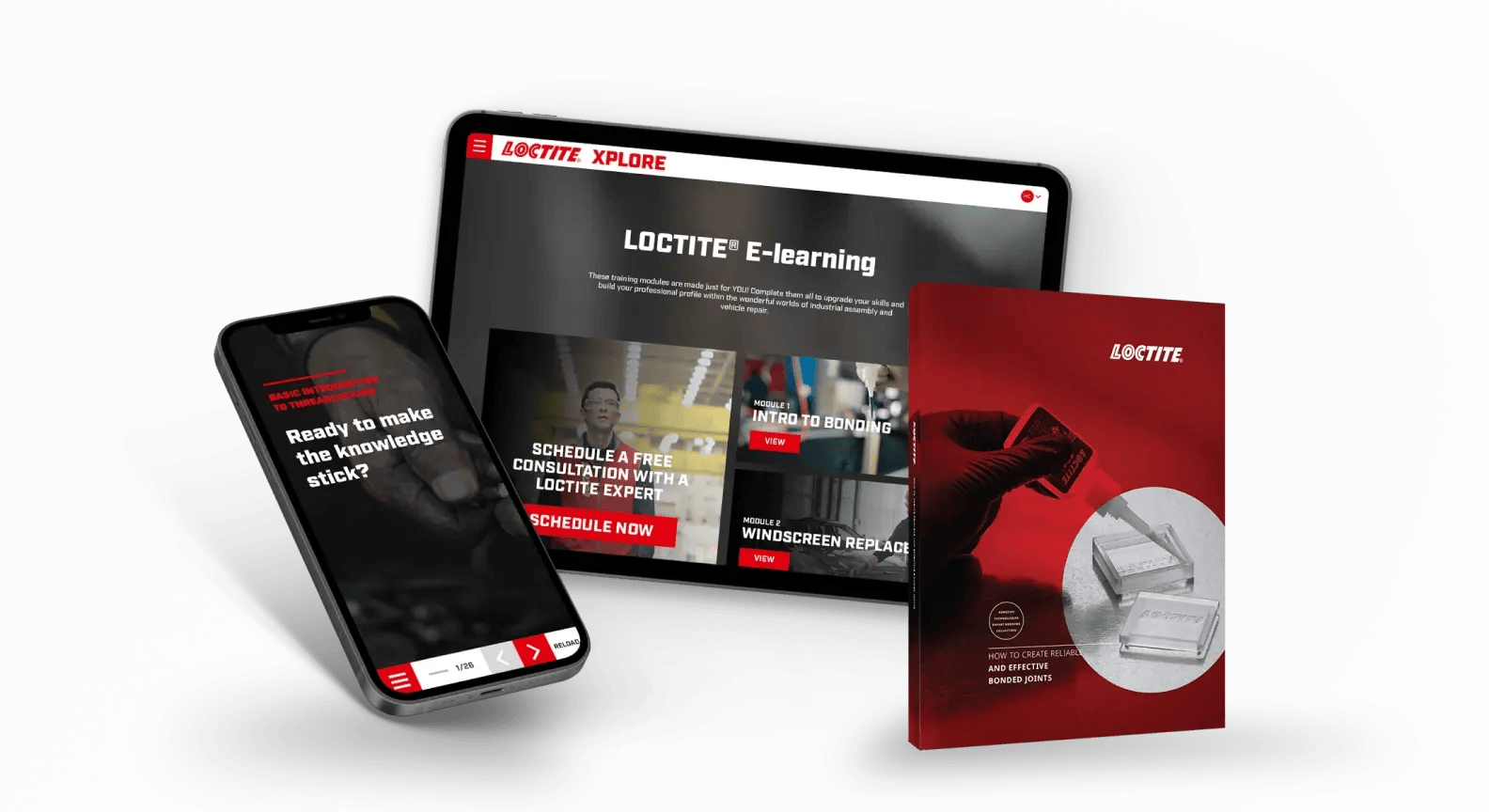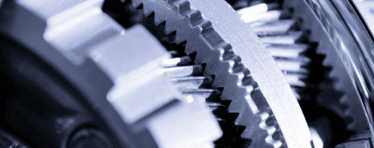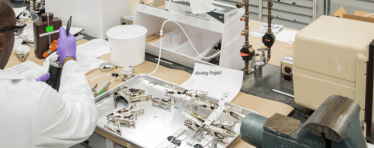
Adhesive Technologies
Get your questions answered by browsing these topic-related FAQs.
FREQUENTLY ASKED QUESTIONS
Comparisons and General Adhesive Benefits
How do adhesives compare to mechanical fasteners in handling different types of loads and stresses in joined assemblies?
Adhesives offer better stress distribution and are often preferred for their aesthetic and material compatibility advantages. Fasteners, such as screws, bolts, and rivets, are typically used for peel and cleavage loads. Each <a style='color: #E1000F; text-decoration: underline' href='https://www.loctitex.com/en/manuals/bonding/2.2-factors-for-joining-method/'>joining method</a> has strengths and weaknesses in specific applications.
Learn more ›Are there any process benefits of using adhesives when joining assemblies?
Yes. Adhesive bonding offers several advantages in the joining process, making it a popular choice in various applications ranging from electronics to automotive construction. The main benefits are design and assembly flexibility, better aesthetics, corrosion resistance, increased thermal and electrical insulation (or conductivity if desired), cost-effectiveness, and ease and speed of application.
Learn more ›Specific Adhesive Technologies
What adhesives are preferred in the automotive industry?
<a style='color: #E1000F; text-decoration: underline' href='https://www.loctitex.com/en/manuals/bonding/6.3.3-polyurethane-pu'>Polyurethane</a>, <a style='color: #E1000F; text-decoration: underline' href='https://loctitex.com/en/manuals/bonding/6.4.2-epoxy-adhesives'>epoxies</a> and silicone adhesives are favoured in the automotive industry due to their properties: resistance to environmental factors (e.g. water, oil, anti-freeze), versatility in bonding dissimilar materials, impact resistance and flexibility, highly effective joint sealing and corrosion prevention, and weight reduction.
Learn more ›What triggers the curing mechanism of cyanoacrylate (CA) adhesives?
The curing mechanism of <a style='color: #E1000F; text-decoration: underline' href='https://www.loctitex.com/en/manuals/bonding/6.2.1-cyanoacrylates/'>cyanoacrylate</a> (CA) adhesives, commonly known as 'super glues,' is triggered primarily by the presence of moisture. Understanding this moisture-activated curing mechanism is crucial in effectively applying and storing CA adhesives (typically in cool, dry places to prevent premature curing).
Learn more ›How does the cure time of cyanoacrylate (CA) adhesives vary?
The cure time of cyanoacrylate (CA) adhesives, commonly known as super glues, can vary significantly depending on moisture and humidity, material types and <a style='color: #E1000F; text-decoration: underline;' href='https://www.loctitex.com/en/manuals/bonding/4.3.6-electrochemical-surface-treatments'>surface</a> conditions, amount of adhesive used, temperature, and presence of accelerators or inhibitors. However, most standard CA adhesives will cure sufficiently for handling within seconds to a minute, though full <a style='color: #E1000F; text-decoration: underline;' href='https://www.loctitex.com/en/manuals/bonding/6.7.3-polyurethane-pu-reactive-hotmelts/'>cure strength</a> might require longer, often up to 24 hours.
Learn more ›What are the key benefits of UV/LED light cure adhesive technologies?
UV/LED light cure adhesives technologies provide a combination of efficiency (e.g. ease of automation, rapid curing and minimal heat generation), performance (e.g. durability, stability, and high bond strength), and environmental benefits (e.g. low VOC emissions, solvent-free and eco-friendly) that make them a compelling choice for a wide range of industrial applications.
Learn more ›How do the cure time and depth vary for light-curing acrylic adhesives?
The <a style='color: #E1000F; text-decoration: underline;' href='https://www.loctitex.com/en/manuals/bonding/5.4.4-technology-specific-characteristics/'>cure times</a> of light-curing acrylic adhesives depend on many factors, including adhesive formulation, layer thickness, type of substrate, environmental conditions, air exposure, and light source distance. However, 2 to 60-second cure times are common, and cure depths of up to 12.7 mm (0.5 in) are possible.
Learn more ›Specific Adhesive Types and Characteristics
What are silane-modified polymers (SMPs)?
Silane-modified polymers (SMPs) are a class of hybrid materials that combine the strength of PUs/polyether with the environmental resistance of <a style='color: #E1000F; text-decoration: underline' href='https://www.loctitex.com/en/manuals/bonding/6.3.7-2c-addition-cure-rtv-silicones/'>silicones</a> (silanes). In addition to their high-performance properties, this product family has gained popularity due to its solvent-free and isocyanate-free nature.
Learn more ›What's the difference between 1C and 2C SMP adhesives in curing?
A single-component (1C) SMP adhesive cures using the moisture in the air, while two-component (2C) systems cure via a second component. This system makes 2C SMP adhesives cure much faster than 1C systems, independent of environmental relative humidity.
Learn more ›What are the key characteristics and applications of epoxy adhesives?
Epoxy adhesives are some of the most common and well-known adhesives. Epoxy adhesives are valued for their strength, durability, and versatility, making them indispensable in various industrial, commercial, and household applications.
Learn more ›EXPLORE OTHER TOPICS
Everything we know -
in your hands
Whether engineering new, more innovative product designs or working to reduce unplanned plant downtime and improve efficiency, LOCTITE®X, our online learning platform,provides novices and seasoned professionals alike with knowledge and skills to address and tackle various industrial challenges.
Start learning - today

